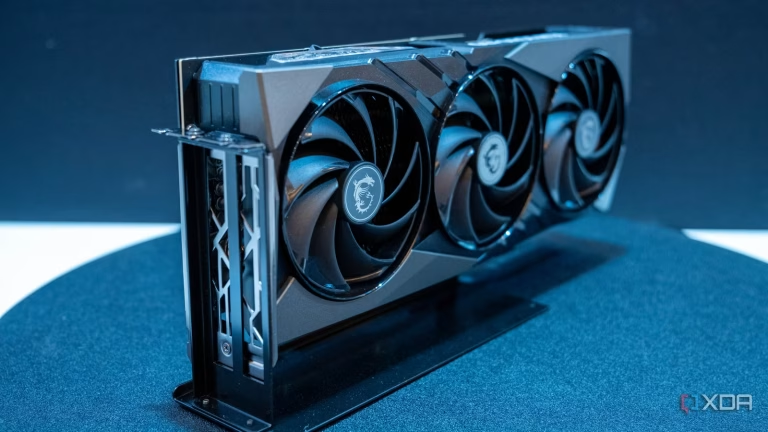GPU overclocking is the process of increasing your graphics card’s clock speeds beyond the factory settings to boost performance. By pushing your GPU to run faster, you can achieve higher frame rates, smoother gameplay, and improved performance in demanding games and applications. Overclocking allows gamers and content creators to get more out of their existing hardware without immediately investing in a new graphics card.
The benefits of overclocking are clear: faster rendering, reduced lag, better handling of high-resolution textures, and a more responsive gaming experience. Competitive gamers, in particular, can gain an edge by extracting every ounce of performance from their GPU.
However, overclocking comes with potential risks if not done carefully. Increasing clock speeds and voltage generates more heat, which can lead to overheating, system instability, crashes, or even permanent hardware damage. Without proper cooling and careful monitoring, the performance boost may be short-lived or cause more harm than good. In this guide, we’ll explain how to safely overclock your GPU, step by step, highlighting both the performance gains and precautions to ensure your graphics card remains stable and reliable.
Understanding GPU Overclocking
GPU overclocking is the process of increasing a graphics card’s operating speeds beyond its default factory settings to improve performance. At a technical level, overclocking pushes the GPU to process more calculations per second, enabling faster rendering of graphics, higher frame rates, and smoother gameplay in demanding applications. Essentially, it allows the card to deliver more power without changing its hardware.
Several GPU components are key to overclocking. The core clock determines the speed at which the GPU’s processor executes graphical computations, while the memory clock controls the speed of the video memory, which affects how quickly textures, shaders, and other data are accessed. Voltage is another critical factor, as increasing it can stabilize higher clock speeds but also generates additional heat. Managing these three components carefully is essential to achieving a stable overclock without damaging the hardware.
It’s important to distinguish between factory-overclocked GPUs and manual overclocking. Factory-overclocked cards are pre-tuned by manufacturers to run at higher speeds safely and come with tested thermal solutions. Manual overclocking, on the other hand, gives users the freedom to push their GPUs beyond factory limits, potentially gaining even higher performance. While manual tuning offers more control and potential speed boosts, it also carries greater risk if not monitored correctly, making careful incremental adjustments and temperature management essential.
Risks and Precautions
While GPU overclocking can provide noticeable performance improvements, it also comes with potential hazards that must be carefully managed. One of the most common risks is overheating. Increasing the GPU’s core and memory clocks raises power consumption, which generates additional heat. Without adequate cooling, this can lead to thermal throttling, system instability, or permanent damage to the GPU. Overclocking can also cause system crashes, graphical glitches, or artifacts, which disrupt gameplay and may corrupt files. Additionally, many manufacturers consider manual overclocking a violation of warranty terms, meaning hardware repairs or replacements may not be covered if damage occurs.
To mitigate these risks, monitoring temperatures during overclocking is crucial. Software tools like MSI Afterburner, HWMonitor, or GPU-Z allow real-time temperature tracking, while stress testing with applications like FurMark or 3DMark ensures stability under high loads.
Before attempting overclocking, make sure your system has adequate cooling, such as high-quality air or liquid coolers, and a stable power supply that can handle increased power draw. By taking these precautions and proceeding gradually, you can enjoy the benefits of GPU overclocking while minimizing the risk of overheating, crashes, or hardware damage.
Preparing Your System for Overclocking
Before you begin overclocking your GPU, it’s essential to prepare your system to ensure both safety and effectiveness. The first step is to update your GPU drivers and related software. Manufacturers frequently release updates that improve stability, enhance performance, and fix bugs that could interfere with overclocking. Using the latest drivers ensures your graphics card communicates efficiently with your operating system and games, providing a reliable foundation for higher clock speeds.
Next, check the physical condition of your PC. Dust buildup on fans, heat sinks, and vents can obstruct airflow, causing higher temperatures and limiting the effectiveness of your cooling system. Regularly clean your components using compressed air or a soft brush, and ensure your case has proper airflow. Rearrange cables if necessary to reduce obstructions and allow cool air to flow freely.
Reducing the load on your system is another important step. Close unnecessary applications running in the background, such as web browsers, streaming software, or cloud backup services. These programs consume CPU, GPU, and memory resources, increasing temperatures and potentially causing instability during overclocking.
Finally, monitor your baseline performance and temperatures before making any changes. Use software tools like MSI Afterburner, HWMonitor, or GPU-Z to track your GPU’s default clock speeds, memory speeds, and operating temperatures under normal gaming loads. Knowing these baseline metrics allows you to safely measure improvements, identify stability issues, and ensure your overclocking efforts do not push your hardware beyond safe limits. Preparing your system properly is the key first step to achieving a stable and effective GPU overclock.
Step-by-Step Guide to Overclocking Your GPU
Overclocking your GPU can unlock additional performance, but it must be done carefully. Follow these steps to safely boost your graphics card’s speed and enjoy smoother gameplay.
Choose Overclocking Software
The first step is selecting reliable overclocking software. Popular tools include MSI Afterburner, EVGA Precision X1, and ASUS GPU Tweak. These programs allow you to adjust core clocks, memory clocks, voltage, and fan speeds while providing real-time monitoring of temperatures and performance. Choose software compatible with your GPU brand and familiarize yourself with its interface before making any changes.
Increase Core Clock Gradually
Start by boosting the GPU core clock in small increments, typically 10–20 MHz at a time. After each adjustment, test stability using a game or stress-testing tool. Monitor for crashes, graphical glitches, or artifacts. Incremental increases allow you to find the maximum stable core speed without pushing the GPU too far at once.
Adjust Memory Clock
Next, increase the memory clock, which affects how quickly your GPU accesses textures and shaders. Like the core clock, raise the memory clock in small steps (10–25 MHz) and test performance after each change. Properly tuned memory speeds can improve texture-heavy game performance and overall frame rates.
Manage Voltage and Power Limits
Adjusting voltage and power limits can stabilize higher clock speeds. Increase the power limit slightly to allow the GPU to draw more energy without overheating. Be cautious with voltage adjustments — small increments reduce the risk of generating excess heat or damaging the GPU. Always monitor temperatures closely while making these changes.
Stress Test and Monitor Temperatures
After adjustments, use stress-testing tools like FurMark or 3DMark to evaluate stability under heavy load. Keep an eye on GPU temperatures, fan speeds, and system responsiveness. Stress testing helps identify the safe operating limits for your overclock.
Fine-Tune Settings
Once you find stable clock speeds, fine-tune your GPU settings for optimal performance. Balance core and memory clocks with temperature limits, ensuring the GPU remains below safe thresholds. Minor adjustments can maximize performance while maintaining long-term hardware health.
Tips for Safe and Stable Overclocking
To avoid damaging your GPU, keep temperatures below 85°C during stress tests and gaming sessions. Avoid large jumps in core or memory clocks; gradual increments reduce instability risks. Regularly update GPU drivers and overclocking software to benefit from performance improvements, bug fixes, and compatibility updates. Consistent monitoring and conservative adjustments are key to a successful and safe overclocking experience.
When to Reset or Stop Overclocking
Stop overclocking immediately if you notice system crashes, graphical artifacts, or overheating. These are clear signs your GPU is unstable or being pushed beyond safe limits. To revert safely, reset your GPU to its default factory settings using your overclocking software. This ensures the card operates within its designed thermal and power specifications, protecting your hardware from permanent damage.
Conclusion
Overclocking your GPU can provide higher frame rates, smoother gameplay, and improved graphics performance without buying new hardware. By following incremental steps, monitoring temperatures, and using reliable software, you can safely unlock your GPU’s potential. Careful, measured adjustments help maintain system stability while extending your hardware’s lifespan, allowing you to enjoy faster and more responsive gaming experiences.


